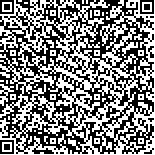| 摘要: |
| [摘要] 目的 了解糖尿病足创面感染铜绿假单胞菌耐药特点并分析其与毒力基因的关系。方法 连续收集2018-01-01~2018-12-31在天津医科大学代谢病医院糖尿病足病科住院的糖尿病足患者中54株细菌培养报告为铜绿假单胞菌的菌株,在药物敏感试验及菌落复种培养后,交南开大学微生物实验室逐一进行铜绿假单胞菌固有pcrV基因检测,以明确铜绿假单胞菌。另收集非糖尿病创面感染铜绿假单胞菌21株作为对照组。对铜绿假单胞菌的3型分泌系统中毒力基因exoS和exoU进行检测及分析其与耐药的关系。对创面中连续2次(每次间隔1个月)及以上培养出的铜绿假单胞菌进行随访。结果 54株中筛查出8株不是铜绿假单胞菌,46株明确为铜绿假单胞菌。糖尿病足组与对照组中,主要致病基因均为含有exoS的铜绿假单胞菌,糖尿病足组为91.3%(42/46),耐药率为11.9%;对照组为76.2%(16/21),耐药率为6.3%。含有exoU的铜绿假单胞菌在糖尿病足组与对照组中均占比较少,糖尿病足组中为8.7%(4/46),耐药率为25.0%;对照组中为23.8%(5/21),耐药率为20.0%。在糖尿病足组中,有6例患者连续2次及以上培养出铜绿假单胞菌,合计19株。有5例患者感染含有exoS的铜绿假单胞菌,其中有2例培养出耐药铜绿假单胞菌,耐药率为23.5%(4/17),均出现在治疗的初期和中期,在末次培养时均转为敏感铜绿假单胞菌,有1例患者创面中含有exoU的铜绿假单胞菌,耐药率为50.0%(1/2),首次培养为耐药菌,末次培养为敏感菌。结论 糖尿病足创面中取得的铜绿假单胞菌中,以含有exoS的铜绿假单胞菌为主,但是在耐药菌方面,含有exoU的铜绿假单胞菌的耐药率更高。同一患者创面的铜绿假单胞菌不会因为耐药与否出现exoS或exoU基因型改变。 |
| 关键词: 糖尿病足 铜绿假单胞菌 毒力基因 抗生素耐药 |
| DOI:10.3969/j.issn.1674-3806.2019.12.03 |
| 分类号:R 587.1 |
| 基金项目:国家自然科学基金项目(编号:81670766);天津医科大学代谢病医院内分泌研究所科学基金项目(编号:2012DX04) |
|
| Antibiotic resistance and virulence gene analysis of Pseudomonas aeruginosa in diabetic foot wound infection |
|
XU Jun, ZHU Xiao-qing, LI Meng-jun, et al.
|
|
National Health Commission Key Laboratory of Hormones and Development(Tianjin Medical University), Tianjin Key Laboratory of Metabolic Diseases, Department of Diabetic Foot ,Tianjin Medical University Chu Hisen-I Memorial Hospital(Metabolic Diseases Hospital) & Tianjin Institute of Endocrinology, Tianjin 300070, China
|
| Abstract: |
| [Abstract] Objective To investigate the trait of antibiotic resistance of Pseudomonas aeruginosa in diabetic foot wound infection and analyze the relationship between the antibiotic resistance and its virulence genes. Methods Fifty-four strains of Pseudomonas aeruginosa were continuously collected from the diabetic foot patients in the Department of Diabetic Foot of Metabolic Disease Hospital of Tianjin Medical University during January 1, 2018 and December 31, 2018. In the bacterial culture report, the 54 strains were Pseudomonas aeruginosa. After the antibiotic sensitivity test was carried out,and the colonies were replanted and cultured, the inherent pcrV gene of Pseudomonas aeruginosa was detected one by one in the Microbial Laboratory of Nankai University, in order to identify the Pseudomonas aeruginosa. At the same time, 21 strains of Pseudomonas aeruginosa from nondiabetic wound infection were collected as the control group. The virulence genes exoS and exoU in the type 3 secretion system of Pseudomonas aeruginosa were detected and analyzed. The relationship between the antibiotic resistance and its virulence genes was analyzed. The Pseudomonas aeruginosa cultured in the wound for two times(one month interval) or more were followed up. Results Eight out of fifty-four strains were not Pseudomonas aeruginosa, and the forty-six strains were Pseudomonas aeruginosa. In the diabetic foot group and the control group, the main pathogenic gene of Pseudomonas aeruginosa was exoS, with 91.3%(42/46) in the diabetic foot group in which the antibiotic resistance rate was 11.9%, and 76.2%(16/21) in the control group in which the antibiotic resistance rate was 6.3%. Pseudomonas aeruginosa with exoU was less in the diabetic foot group and the control group, with 8.7%(4/46) in the diabetic foot group in which the antibiotic resistance rate was 25.0%, and 23.8%(5/21) in the control group in which the antibiotic resistance rate was 20.0%. In the diabetic foot group, Pseudomonas aeruginosa was cultured twice or more in 6 patients with diabetic foot, with a total of 19 strains. Five patients were infected with Pseudomonas aeruginosa with exoS among whom 2 patients were cultured with drug-resistant Pseudomonas aeruginosa and the antibiotic resistance rate was 23.5%(4/17) and these conditions occurred in the early and middle stages of treatment, and they all turned into sensitive Pseudomonas aeruginosa in the last culture. In one patient, Pseudomonas aeruginosa with exoU was found in the wound, and the drug resistance rate was 50.0%(1/2). In this patient, the first culture was drug-resistant, and the last culture was sensitive. Conclusion Among the strains of Pseudomonas aeruginosa isolated from diabetic foot wounds, the Pseudomonas aeruginosa with exoS is the main one. However, the antibiotic resistance rate of Pseudomonas aeruginosa with exoU is higher. The Pseudomonas aeruginosa in the same wound of a diabetic patient will not change its exoS or exoU gene because of changing of antibiotic resistance. |
| Key words: Diabetic foot Pseudomonas aeruginosa Virulence gene Antibiotic resistance |

